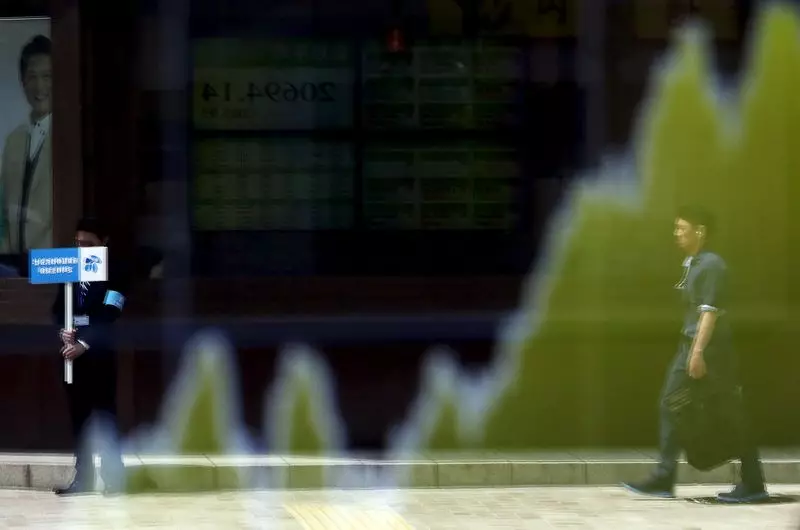On Thursday, the majority of Asian stock markets demonstrated a mixed performance amidst the backdrop of the Federal Reserve’s unexpected bold interest rate cut. While the markets showed some initial optimism in response to a substantial 50 basis point reduction in interest rates, this enthusiasm was tempered by broader concerns about the implications of such a cut on future economic growth. The interplay of these factors created an environment of volatility, with varying reactions across different regions.
Japan’s stock markets were notable outliers, showcasing substantial gains as the Nikkei 225 and TOPIX indices surged between 2% and 2.8%. This rally can be largely attributed to a significant weakening of the yen, which fell sharply from nearly nine-month highs following the Fed’s announcement. The depreciation of the yen provided a competitive edge to exporters, triggering buying activity and supporting the upward movement in stock prices. Additionally, investors appeared to position themselves favorably as they awaited the Bank of Japan’s (BOJ) crucial meeting scheduled for Friday, where speculation regarding potential interest rate adjustments loomed large.
Despite the strong performance in Japan, the environment in other Asian markets remained cautious. The looming influence of the Fed’s commentary regarding a higher outlook for neutral rates cast shadows over investor sentiment, suggesting that lasting gains may be harder to maintain.
Subdued Gains Elsewhere in Asia
In Australia, the ASX 200 index experienced a slight rise of 0.3%. However, this modest gain was overshadowed by robust labor market data that raises concerns for the Reserve Bank of Australia (RBA) regarding prolonged high-interest rates. The strong labor figures may compel the RBA to take a more hawkish stance, thus affecting future investment strategies across the board.
Chinese markets also saw a mild rebound, with the Shanghai Shenzhen CSI 300 and Shanghai Composite indices rising by 0.5% and 0.4%, respectively. These figures extend a recovery from a seven-month low, but analysts remain cautious considering the People’s Bank of China’s (PBoC) stance towards stimulus. As the PBoC prepares to announce its loan prime rate, expectations lean towards maintaining the status quo, reflecting a conservative approach by Beijing.
Meanwhile, South Korea’s KOSPI index fell by 0.5% as traders returned to market after a three-day break, while Indian index futures hinted at a positive start as the Nifty 50 approached new peaks. The contrasting trends across these markets highlight the diverse economic trajectories within the region, driven by both domestic factors and broader macroeconomic signals.
U.S. Economic Struggles and Global Repercussions
The Federal Reserve’s recent move comes at a time when apprehensions persist over a potential economic slowdown in the United States. While Fed Chair Jerome Powell aimed to alleviate concerns by suggesting that inflation and labor market risks are relatively balanced, the introduction of higher neutral rate expectations indicates a departure from the ultra-low interest environment that characterized much of the post-pandemic recovery phase. Investors are now grappling with the reality that the Fed is unlikely to indulge in aggressive monetary easing as before.
Moreover, Powell’s remarks indicate that higher interest rates could become the norm if inflation continues to pose challenges. This narrative will likely reverberate across global markets, influencing trading strategies as companies and investors adjust to a changing economic landscape.
The current state of Asian markets reflects a complex interplay of factors inspired by the Federal Reserve’s recent decisions, local economic data, and global investor sentiment. Although some markets, particularly Japan, experienced significant gains driven by currency dynamics, others remain cautiously optimistic in the face of potential economic challenges. As the implications of the Fed’s policy shifts unfold, market participants are advised to stay vigilant, prepared for further volatility and uncertainty in this rapidly evolving financial landscape.

